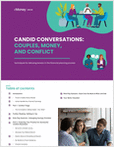There have been lots of headlines recently about an emerging economic recovery. July unemployment ticked down to 9.4 percent from 9.5 percent, as the economy shed “only” 247,000 jobs. Pending home sales have increased for five straight months, signaling that housing prices may have finally found a floor. Overall economic activity seems to be in expansion mode, with a mere 1 percent decline in second quarter GDP — a vast improvement from the 6.4 percent decline in Q1.
The market has cheered all these trends, with the Dow up more than 40 percent from its March low. Indeed, Goldman Sachs rang in second quarter profits of $3.4 billion — the biggest gain in the storied firm’s 140-year history.
But financial advisors should not expect the good times to roll again. As our economics columnist Alexei Bayer persuasively argued in last month’s issue, the recent boomlet has no basis in the real economy. The Treasury through the TARP program and the Fed through its banking reserves have introduced nearly $2 trillion into the economy and the banks have spearheaded a stock-buying binge with this taxpayer money, creating a new equities bubble.
At the very same time, ballooning government spending — the Obama administration expects a deficit this year of $1.8 trillion, or four times last year’s amount — is creating a bond bubble as the government issues more debt to finance our insatiable appetite for spending money we don’t have. Our debt currently amounts to $38,500 per resident of the United States.
So here are a few things to think about while Congress contemplates seeding a new government entitlement with its first trillion-dollar installment. Remember the subprime mortgage crisis that precipitated all this economic unpleasantness? Well, delinquencies in prime mortgages have risen 13.8 percent in the second quarter, according to S&P research. The scale of financial problems this implies is vastly greater than the subprime crisis.








 September 01, 2009 at 04:00 AM
September 01, 2009 at 04:00 AM










